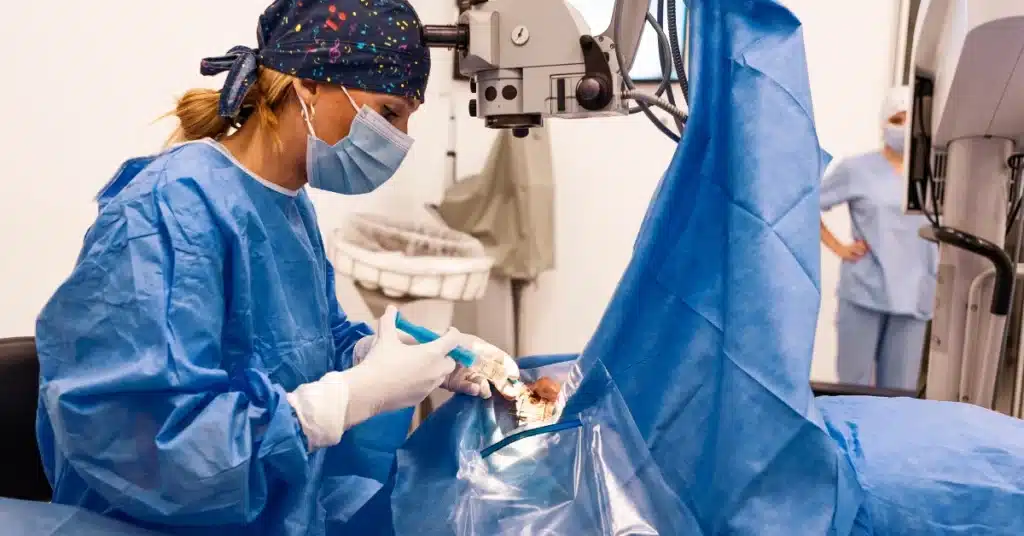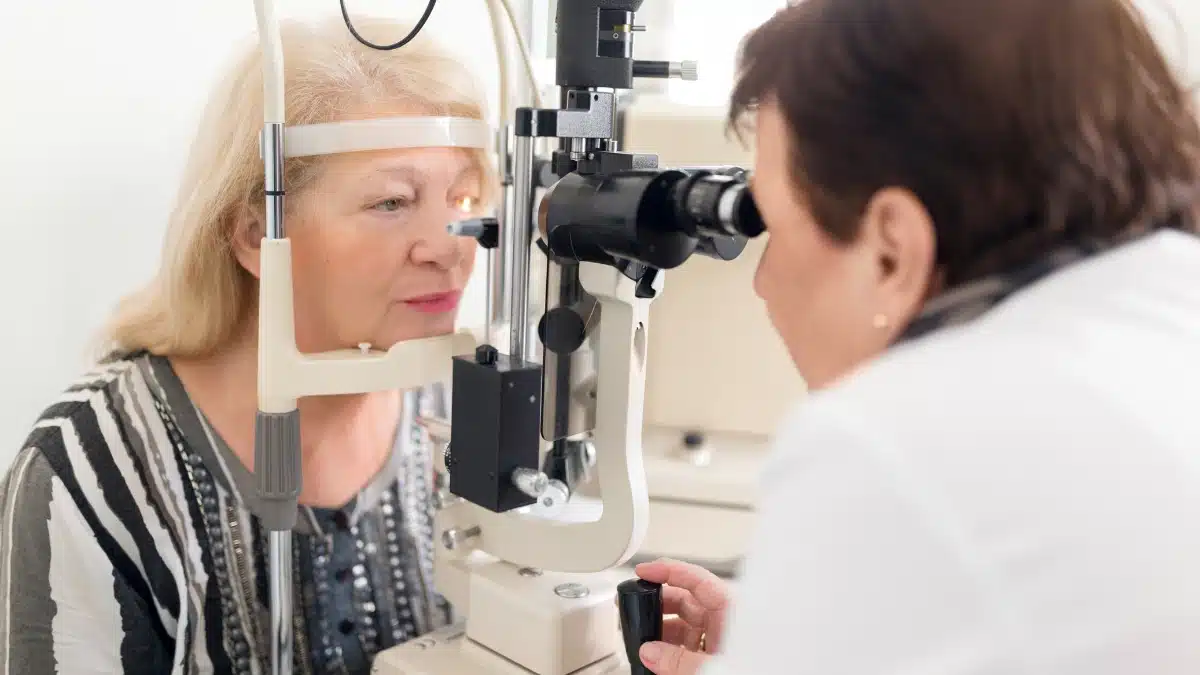Acute Angle Closure Glaucoma (AACG) is a serious eye condition that must be detected early and treated immediately.
A sudden narrowing or shutting of the drainage angle in the eye causes this vision-threatening condition.
It leads to an abrupt increase in the Intraocular Pressure.
If this medical condition is left untreated, it may cause severe eye pain, blurred vision, and even permanent vision loss.
In this article, we’ll focus on the symptoms, causes, and treatments of Acute Angle Closure Glaucoma.
Understanding Acute Angle Closure Glaucoma
Acute Angle Closure Glaucoma (AACG) is a disorder that causes high eye pressure abruptly.
This occurs when the eye’s drainage angle gets unexpectedly closed, hindering fluid drainage.
Irreversible vision loss may result if AACG is not treated immediately.
In AACG and Narrow-Angle Glaucoma, increased Intraocular Pressure (IOP) occurs because the eye’s drainage angle is blocked.
AACG can be uncomfortable and must be treated by a doctor regularly.
Try:
Symptoms of Acute Angle Closure Glaucoma
 Source: gettyimages
Source: gettyimagesSignificant eye irritation, blurred vision, headaches, nausea, and a red-eye look are among the severe symptoms of AACG.
The pupils may enlarge and stop responding to light, and the eyesight may quickly deteriorate.
Some of the symptoms of AACG are:
- Eye pain
- Headaches due to Glaucoma
- Red eyes
- pupils of various sizes
- Sudden blindness
Patients with blurred or poor eyesight might notice halo effects around lights.
It’s important to identify these signs as soon as possible to seek medical attention.
Acute Angle Closure Glaucoma Causes
Your eye’s drainage system consists of a network of canals.
Between your iris and cornea is a tissue mesh where these canals reside. AACG entirely blocks these canals.
It prevents fluid from passing through them. Your optic nerve may become damaged due to the mounting pressure.
Some other causes of AACG are:
- Age: Older persons have an increased risk of AACG
- Pupil dilation: Eye tests and other procedures that expand the pupils may trigger an episode in those who are at risk
- Family history: A person may be more susceptible if they have Glaucoma in the family
An awareness of these factors is essential for early identification and successful treatment.
Treatment of Acute Angle Closure Glaucoma
 Source: Nastasic_from_Getty_Images
Source: Nastasic_from_Getty_ImagesYour doctor will attempt to relieve some of the pressure in your eye as the initial step in treating your acute angle closure attack.
They could use:
- Drops that make your pupil smaller
- Medication that reduces the amount of fluid produced by your eyes
Medication, laser surgery, or conventional surgery are all possible forms of treatment for AACG.
Some of the available treatments for AACG are:
- Glaucoma medications: Injectable and topical medications are applied to help lower eye pressure (Low IOP)
- Surgery: Surgery may occasionally be necessary to address the anatomical issues causing angle closure
- Laser Peripheral Iridotomy (LPI): Some individuals may also choose for laser operation by drilling a tiny hole in the iris’ border for proper fluid drainage
It is important to seek immediate medical help if diagnosed with AACG to avoid potential risks and side effects.
Want to know more about the various Glaucoma treatment? Read our article: A Guide to Glaucoma Treatment Options
Opt for Glaucoma medications such as Lashgrow 3 ml and safequard your vision.
Summing up
Acute Angle Closure Glaucoma is a serious medical condition that requires immediate medical assistance.
Early medical attention can mean the difference between maintaining and completely losing your vision.
Significant eye discomfort, headache, and visual blurring are some of the symptoms of AACG.
Medications, Laser Peripheral Iridotomy (LPI), and surgery may help in treating Acute Angle Closure Glaucoma.
AACG can be avoided with early detection and prompt treatment.
It is important to emphasize the importance of eye health and regular exams.
Frequently Asked Questions
How serious is Acute Angle Closure Glaucoma?
Acute Angle Closure Glaucoma is a highly serious condition.
If not treated, it might lead to vision loss and even blindness due to a sudden rise in eye pressure, necessitating immediate medical attention and intervention.
What is the best treatment for Acute Angle Closure Glaucoma?
The primary treatment for Acute Angle Closure Glaucoma is immediate medical intervention to lower eye pressure.
This often involves medications, laser therapy (Iridotomy), or surgery (Iridectomy or Trabeculectomy) to prevent further damage and preserve vision.
How is Acute Angle Closure Glaucoma diagnosed?
Acute Angle Closure Glaucoma is diagnosed through a comprehensive eye exam.
This includes measuring Intraocular Pressure, assessing the anterior chamber angle, evaluating the optic nerve, and considering symptoms.
Accurate diagnosis is crucial for the immediate treatment of ACAG.
Where can I find more information about managing Acute Angle Closure Glaucoma?
For information about Acute Angle Closure Glaucoma, treatment choices, and support for those affected by this ailment, consult credible sources and resources.
GoodRx Medicine provides valuable information about ACAG, including treatment options and insights from leading experts in the field.
What are the symptoms of Angle-Closure Glaucoma?
Symptoms of Angle-Closure Glaucoma include severe eye pain, blurred vision, headaches, nausea, vomiting, halos around lights, and sudden vision loss.
If experiencing these symptoms, seek immediate medical attention.
When referencing outside resources, GoodrxMedicine always provides full citations. To learn more about the measures we use to maintain the quality of our content, please review our Content Information Policy.











